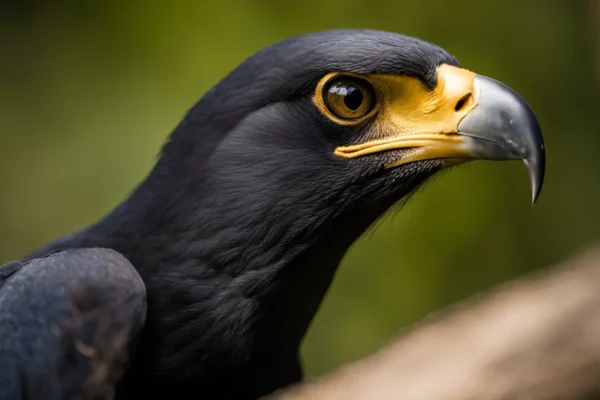It may be difficult to distinguish between words related to chickens, such as chicken, pullets, roosters, hens, and cockerels, even though you may comprehend the vocabulary and ideas usually used on farms since many people have never been on one in the first place. If you want to start your own chicken farm and purchase hens and roosters of various ages, it might be perplexing since many people are unaware that these names are just different ways of referring to birds of different ages and genders.
Even worse, the majority of Americans don’t realize that chickens are live creatures that were brought into domesticity thousands of years ago; instead, they only think of chickens as a piece of white meat wrapped in plastic.
But it goes much beyond that level of complexity. It’s important to understand the distinctions between the phrases “chicken,” “hen,” and “rooster,” even if they are often used. All you have to do is read this article through to the end to discover the differences without having to go see a farm keeper.
All breeds and varieties of chickens raised on poultry farms are referred to as “chickens,” which is an anthropomorphic word for a domesticated bird used for a variety of purposes, including the production of eggs and meat. There are, however, a few more terminology that you should know.
Hen and rooster are the two most fundamental words. The female chicken is referred to by the former, while the mature male chicken is referred to by a rooster. Remember that a group of young chicks that have just hatched from eggs are referred to as “chickens” and are housed and cared for throughout their growth period.
It’s usually not too difficult to distinguish between mature hens and adult roosters. Nonetheless, there are several varieties of chicken, and as a result, their characteristics vary, making it sometimes difficult to discern the female from the male.
This is particularly true for hens who possess more masculine characteristics, such as longer and bigger wattles and combs, which may make them difficult to identify at first glance.
If you would want to understand more about chicken, this material has all the facts you need, along with the names that are used for both genders at various ages. For more information, keep reading!
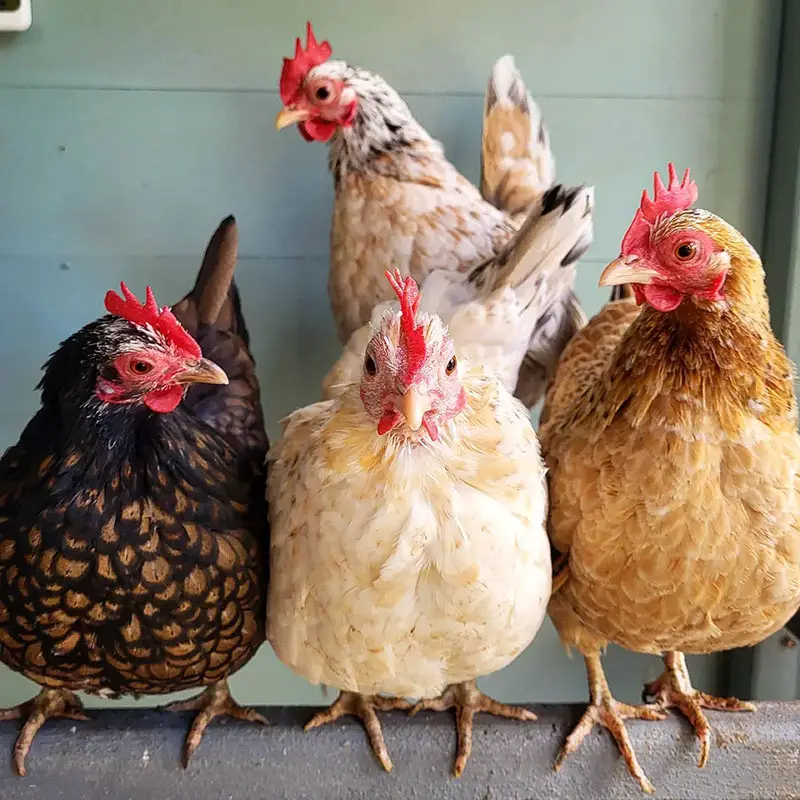
Over 5,000 years ago, most chickens were brought under human control. That does not imply, however, that there are no wild chickens. The junglefowl chicken, found in Hawaii and other isolated parts of the globe, is the closest known related to domesticated chickens.
Though most of those chickens are thought to be ordinary chickens that have returned to the wild, others have never been tamed or cared for by people. Since they were domesticated, people have utilized chickens for their meat and eggs.
There have also been attempts worldwide to outlaw cockfighting, which is now seen as barbarous and involves the use of roosters. Chickens are members of the Phasianidae family of birds, much as peacocks and turkeys.
Before we begin comparing hens and roosters to determine the most important distinctions between them, you may also get familiar with some of the basic terms used in the chicken industry.
Chicks
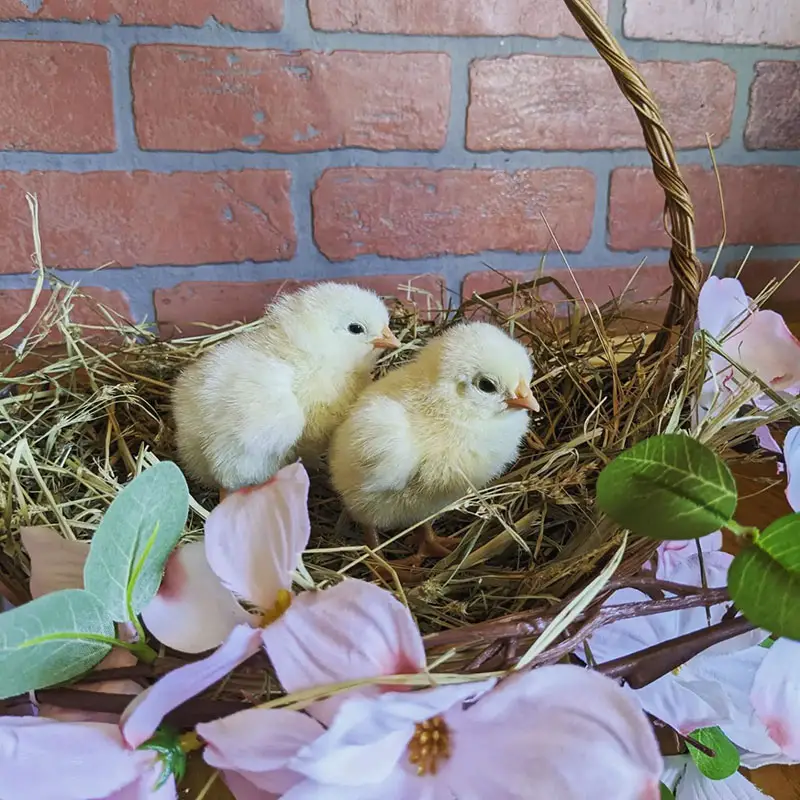
While it’s true that the word “chick” is often used colloquially, the only chick in this article is the one who just hatched from an egg. Yes, when hens sit on it daily until the fertilized eggs hatch, chicks—which are essentially young chickens—come to life.
The incubation period for young chicks is typically 21 days. In order to emerge from the fertilized eggs, they must possess the strength to peck their way out. Despite being quite defenseless when they initially hatch, they develop rather quickly. They are cute, little, and yellow.
Pullets
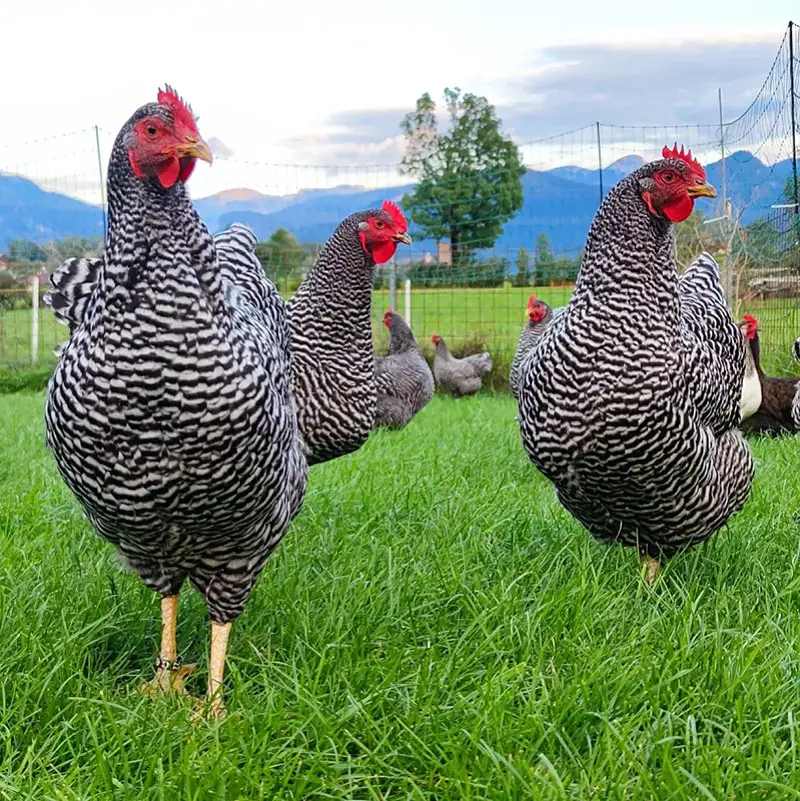
once a chick is three months old. If they are female, they will develop into a pullet; if they are male, they will develop into a cockerel; more on that later. Some may still consider their chicks, even if they are called pullets since they are less than a year old and just three months old. However, it’s important to note that only recently born chicks may be referred to by such name if you wish to use proper language.
Pullets are best seen as teens since they are too young to produce eggs on their own and too old to be considered newborns. From 16 to 20 weeks old, as they become older, you’ll notice that they get moodier, more tense, more chatty. As their first egg-laying season draws along, it may be seen as pullet-like adolescence.
Frequently, you may see them visiting various hen flocks and nests, appearing as if they are searching for something. Due to their confused age, they have trouble integrating into flocks and the overall hen hierarchy, but gradually, other hens will come to accept them.
Hens
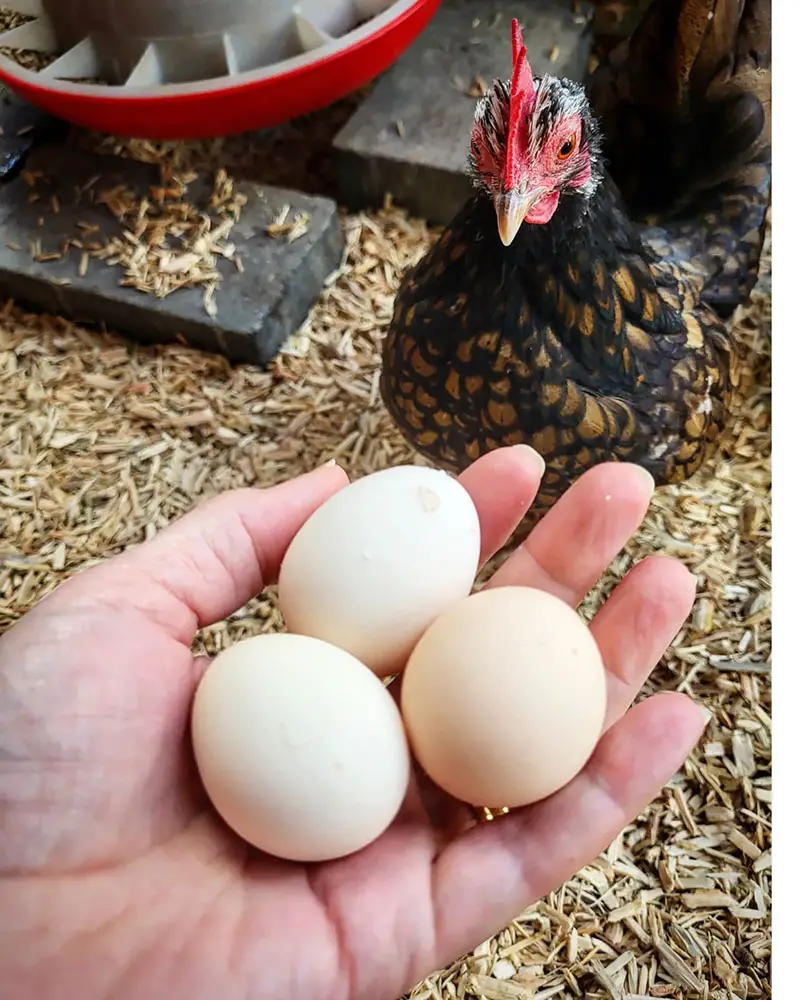
Hens are not only chickens; other bird species that produce eggs for human use are also often referred to as hens. The day a pullet lays her first egg is when she becomes a hen. From that point on, they will consistently lay eggs every few days, depending on the species, until they reach the age of three or four.
Not only may roosters choose on hens during the visually striking courtship and mating ritual, but hens have no control over when they will produce eggs. Even at their advanced age of four, some chickens may live for as long as ten years before dying.
Cockerel
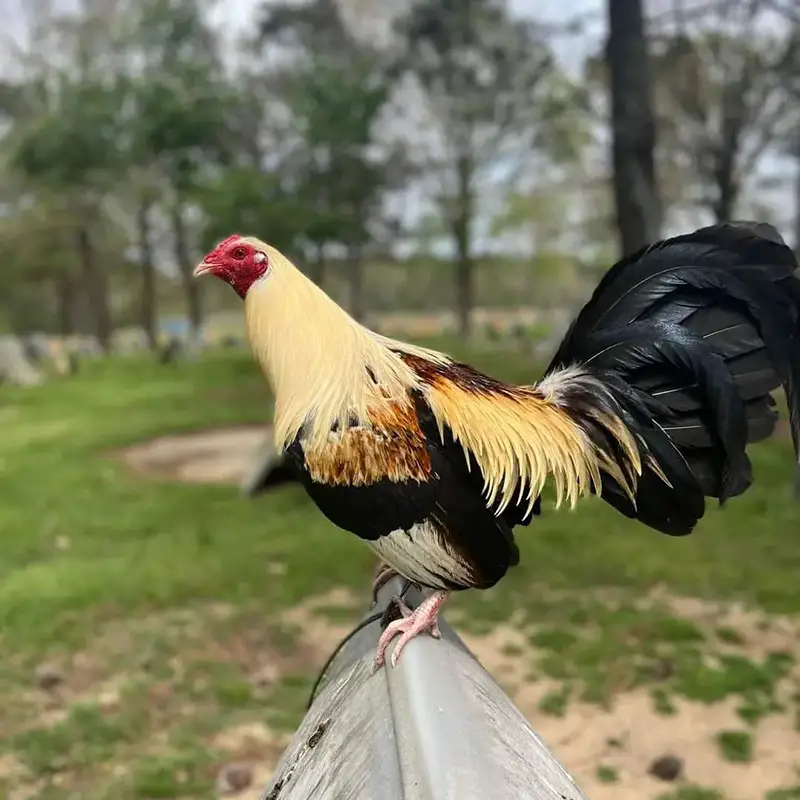
Cockerels are adolescent roosters that will stay that way until they achieve sexual maturity, just as pullets are young hens. Farmers start referring to cockerels as roosters after they attain sexual maturity, which occurs at around one year of age.
They may attain sexual maturity at one year of age, although they will start to roost much sooner. Certain kinds of roosters begin their roosting at 12 weeks of age, whilst other species start at 15 weeks.
Their initial crowing, or roosting, may sound gargled or even squeaky, but as they become older and more experienced, they will become experts at it. Their crow gets louder when they are more territorial.
Early on in life, cockers develop a strong sense of territory. Even male chicks may sometimes attempt to convince other chickens that this is their domain and that no one should cross them. As they mature, they will probably develop more hostile toward other roosters, showing signs of hostility such as play fighting, chest banging, and combative communication.
Although they are skilled at asserting their authority over pullets and other cockerels, hens will not allow their cockiness to be shown and will ignore them if they attempt to do so.
Rooster
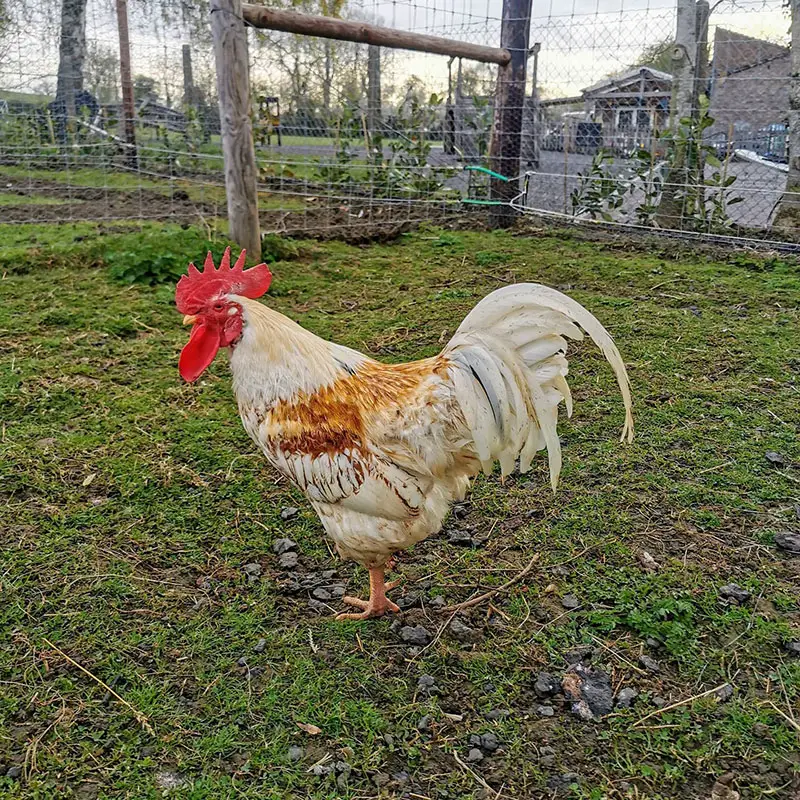
A rooster that achieves maturity and becomes one year old becomes a rooster, capable of mating with hens. They will frequently become pushy and violent as they look for the hens to mate with and increase to their flock since now that they are adults, their territorial behavior and hostility will also surge.
Most of the time, farmers have to keep roosters apart. Otherwise, they’ll hurt other roosters and get into fights. Nonetheless, males will put out a lot of effort to break up disputes since they are very protective of the flock’s hens. No one will be harmed in this manner.
Note that the older roosters will often challenge the older ones to a battle, and if the older roosters prevail, the younger roosters will take over as flock leaders. They are allowed to stay in the same location as their original flock after they lose, or they will sequester themselves until they pass away.
Capon
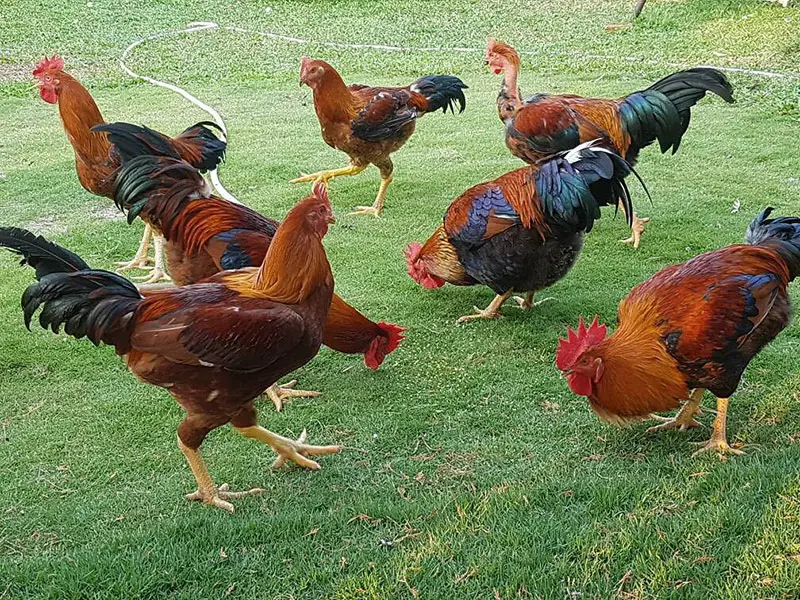
Castrated testicles are used to identify roosters as capons. Moreover, a few of them have estrogen implants, which may cause decreased hostility. Occasionally, capons undergo castration as well to enhance the taste and deliciousness of their flesh. Numerous researches examine both their development and the consequences of castration.
Many nations have given up on canonization since it is no longer a desirable practice. Since it’s regarded as a component of the opulent meal menu at upscale restaurants and other cuisines in France, several European countries, including France, still practice it.
Crucial Dissimilarities Between Roosters and Hens
When they reach adulthood, distinguishing hens from roosters is simple. It is more challenging, however, when they are younger. In this section, we’ll go over all the important distinctions between hens and roosters.
Form of Feathers
The most straightforward method of differentiating between an adult male and female is to observe the variations in the form of their feathers and, naturally, the appearance of their tails.
To start with, hens will always have spherical feathers, but roosters have bigger, longer, and more pointed feathers. Going to the coop and selecting a hen and a rooster yourself is the simplest approach to verify whether this is accurate. You may gently lift their wings to examine the feather structure.
However, bear in mind that this might differ in various breeds, so you should always take it into account while checking other variables. It’s important to note that female birds, particularly pullets, have duller hues and less color variations on their wings than do roosters, which often have a more brilliant assortment of colors.
Notes from the editor: To avoid accidentally hurting the chicks, always use a firm piece of cardboard or even an unused credit card to look for form changes in the feathers.
Damages to plumage
The hues of plumages vary; they might be reddish-brown, white, yellow, or brown. This mutation gave them the ability to hide from and be protected from their natural predators in the wild, a feature that has persisted even after they were domesticated.
Because males want the hens to see them and be drawn to them for mating, roosters have more colorful feathers. Because they are meant to terrify any predators that come near the coop, plumages are also enormous and vivid. In the end, roosters serve as the flock’s protectors, crowing to alert the hens when a predator approaches.
Hens, on the other hand, have less feathers because historically the roosters in the coop have shielded them. Unlike roosters, their tails are less noticeable and their feathers lack iridescence.
Editor’s Note: The best and most secure method to tell whether a chicken is a hen or a rooster is to look for iridescent feathers.
Acts
You may hear hens “chatting about something” all the time since they are gregarious and talkative. In addition to being talkative, roosters also exude a sense of pride and boldness, particularly when interacting with one another.
Both roosters and hens have the potential to be combative and violent. Roosters, on the other hand, are far more protective of their flock and will become aggressive or even murder any other rooster that attempts to seize control of it. Their bravery wanes as they become older and get older.
Editor’s Note: If the eggs were fertilized, the hen will lay on top of them. On the other hand, a rooster is said to entice hens for mating by performing a mating dance.
Combs & Wattles
Examining their wattles and combs is another simple method to tell a hen from a rooster. The majority of the time, verifying these is error-free.
Beneath the bills and beaks, wattles are the loosened red tissues. Depending on the breed, they may dangle conspicuously and serve the purpose of regulating body heat. In roosters, the wattles could be more noticeable and resemble a beard. This makes it simple to determine if the chicken you are seeing is indeed a rooster.
During weeks 6 and 7, they could be simpler to distinguish from one another, although they might be much smaller when the chicken is a young chick, pullet, or rooster.
Conversely, the combs on top of their heads are made of tissue that resembles hair. A rooster’s combs are much longer and larger than a hen’s. They are also a component of their cooling system since hens do not perspire in the same manner as people. The combs contain a large number of blood vessels.
The chicks’ combs will become more noticeable as they get older—three weeks and up. If you observe a bunch of three-week-old chicks, the males will soon be separated into cockerels because they have the fastest-developing combs.
Editor’s Note: When a hen’s combs begin to grow, they will probably be much smaller and brighter—almost pink. You can tell that the chick is female by looking for pink combs.
Differences in Legs
Roosters have longer, thicker legs than hens, which are shorter and thinner. Above the toes of a rooster are bony growths that resemble sharp spurs on the legs. Hens seldom have leg spurs, however elderly hens may sometimes have them.
Leg spurs have a drawback in that they may be utilized for self-defense, particularly by aggressive rooster that like to fight other rooster and cockerels. Roosters that become very combative may have their spurs removed in order to prevent them from harming other hens and cockerels.
You will be able to tell hens from roosters based on these characteristics as well as other distinguishing characteristics.
Editor’s note: In the illicit sport of cockfighting, which pits two roosters against each other until one of them dies, leg spurs are a potent tool.

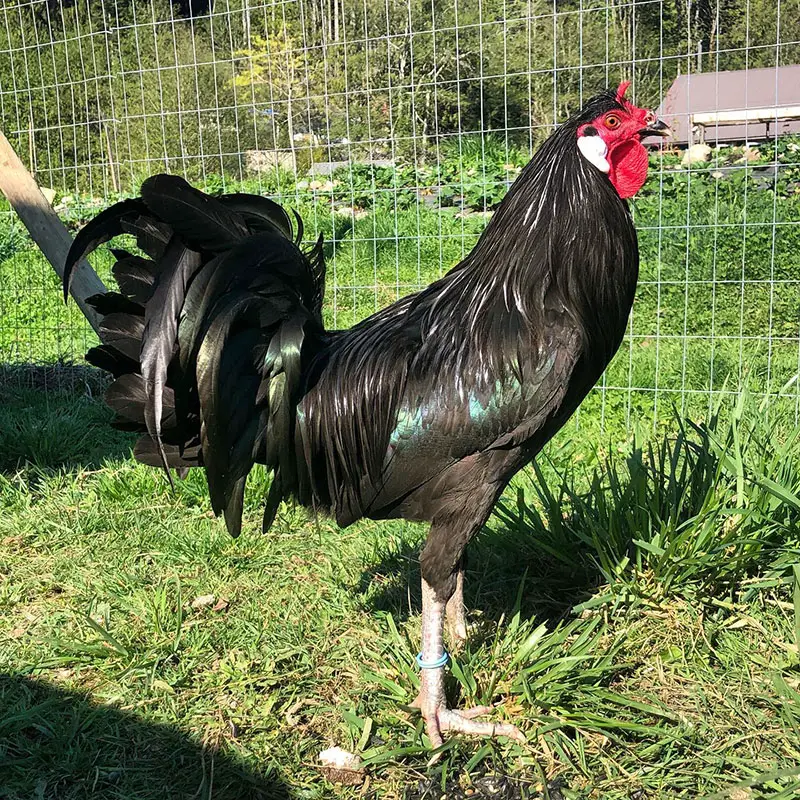
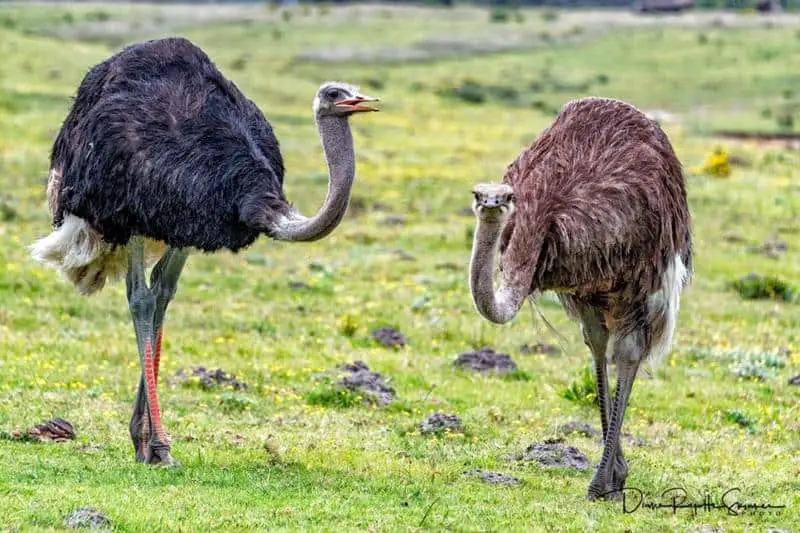
![35 Most Beautiful Birds in the World [Pretty Birds]](https://birdsology.com/wp-content/uploads/2023/05/27413009815_b8357b0f0e_b-600x400.jpg)
![Are Penguins Birds Or Fish? [Explained]](https://birdsology.com/wp-content/uploads/2024/01/14636.webp-600x400.webp)
